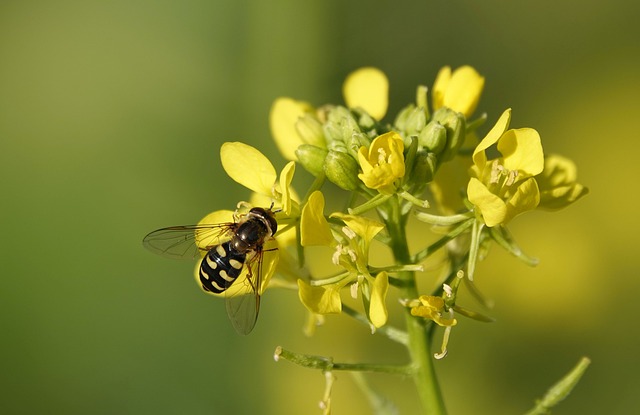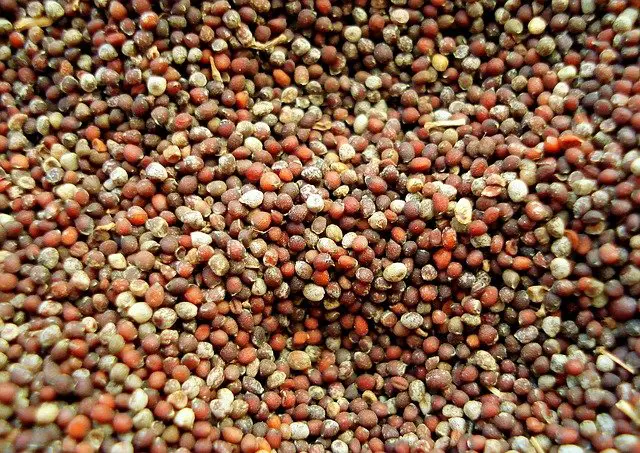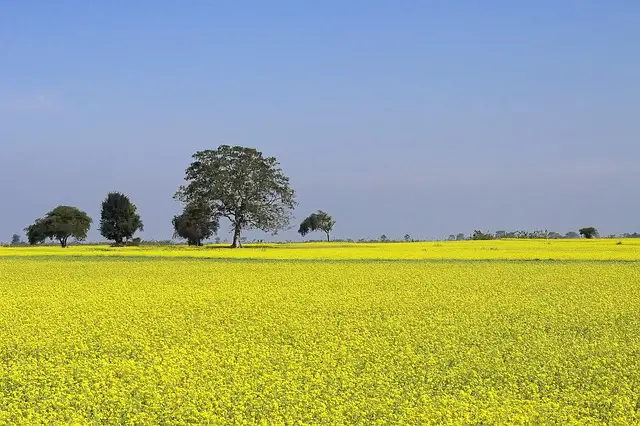What's On This Page
It is time to give the words “mustard,” “plant,” and “guide” a new meaning in your life. The mustard plant has many useful purposes, including culinary, medicinal, and general lifestyle. This article will teach you about the many attributes of this beneficial plant. Mustard is a green leafy vegetable and a famous spice, often used as salad dressings. Mustard greens are the leaves of the mustard plant, while mustard powder is prepared from ground seeds. It is known to be one of Earth’s most powerful natural pain relievers. Our ancestors have used this plant since time immemorial for many purposes.

Due to the presence or absence of certain chemicals in their chemistry, there are two types of mustard plants—black and white or brown. Black mustard seeds are a common herb found in supermarkets and grocery stores. On the other hand, brown mustard seeds are used extensively in Indian cuisine as a spice and condiment. The preparation of the bhuna masala dish depends on the kind of seed used.
The mustard green is used as a vegetable and can be eaten raw or cooked. You can also grind it into flour or cook it into curry powders.
How is mustard grown?
Mustard is easy to grow in the garden as it tends to grow easily. It is grown for its leaves or seeds. The mustard plant is an annual herb that grows from 10 inches to 4 feet tall. It has a hairy stem, light green leaves, and a yellowish-white flower that grows at the top of its stem.
There are three types of mustard—brown, black, and white. Brown mustard has small and slender leaves, while black mustard has larger leaves.
The essential oil of mustard
It has a distinct odour and can be used for cooking. Mustard is rich in various antioxidants, which help prevent heart diseases. It is also known to have an anti-inflammatory effect on the body.
Benefits of mustard seeds
Mustard seeds contain a significant omega-3 fatty acid called alpha-linolenic acid (ALA). The ALA gives solidity to the seed and helps its digestibility with better heat production from food.
Mustard oil nutrition
The oil of mustard contains many nutrients that are essential for good health. Mustard oil has undergone the process of steam distillation, which gives it its characteristic aroma and colour. Mustard oil is a natural source of various essential nutrients. These minerals include calcium, iron, magnesium, phosphorus, sodium, and zinc. Since it contains several minerals, it is considered to be healthy food.

Characteristics of a mustard seed
Mustard seeds have a pungent taste. These are not as strong in their taste as other spices but are somewhat medicinal. They can be soaked in water for a few hours before cooking to remove the pungency that can cause problems with digestion.
In Indian cuisine, mustard seeds are used extensively. They are used to make pickles and chutneys and as ingredients in many curries and dishes. They add a wonderful zesty taste to all dishes and salads.
Is mustard a vegetable
Mustard is rich in certain minerals, which are essential for body maintenance and for improving health. Most minerals, such as copper, iron, zinc, and calcium, can be found in mustard. One should eat various vegetables to get all the essential vitamins and minerals.
Mustard greens are one of the important vegetables used since ancient times. Since it is a leafy vegetable, it can be eaten raw or cooked.
Where does mustard grow
Mustard can be grown in all types of soil. It grows well in sandy or loamy soil. Mustard seed is the female part, and the plant grows from this.
Storage of mustard seeds
The mustard seeds can last up to 6 months, stored in air-tight containers at room temperature (20°C). They should not be exposed to direct sunlight or stored at extremely high temperatures (over 70° C).

The scientific name of mustard seed
The scientific name of mustard seed is Brassica juncea. It belongs to the family Brassicaceae. The family contains many other important vegetables like cabbage, cauliflower, and broccoli.
The mustard seeds can be used in the form of oil as well as powder. You can use the powder to prepare your spice mix or add flavour and taste to curries or meat dishes. However, You must cook these seeds properly before using them in any dish as they are susceptible and heat intolerant.
Mustard plant height
The mustard plant is known to grow at 10 to 30 inches. It has petioles of about 2 to 4 inches in length. The plant is considered herbaceous and annual and can be easily grown in the garden or other soil areas upon their germination.
Epazote, a Mexican herb, has natural plant chemicals that bind with fatty acids released by digestion, thereby preventing the formation of cancer-causing chemicals. Mustard seeds are also high in Vitamins B1 and C.
How mustard oil is made
Mustard oil is extracted from mustard seeds using heat, pressure, and solvents. The yellow paste of mustard seeds is allowed to come into contact with hot water in a vessel for a long time until the oil separates from the seed. Mustard oil contains around 80% monounsaturated fatty acids and 6-13% polyunsaturated fatty acids.
How much mustard should be eaten?
Mustard belongs to the Brassica family and has antimicrobial properties that help prevent infections caused by worms or fungi. Its medicinal properties can help prevent infections, especially in those who suffer from dry and irritated skin.
Mustard seed oil for hair
Mustard oil is also used on hair as a natural alternative to an after-shampoo conditioner. It makes it smooth and silky with a long-lasting shine that will always make you look beautiful.
FAQs
Why is mustard oil banned in India?
Mustard seeds are a type of flowering plant that contains the chemical thiosulphate. In India, this chemical is very toxic and illegal to use. After harvesting, the hot water used to extract mustard oil from the seeds can lead to toxic mustard gas, harming people’s health. In many countries, it is even banned altogether.
Does mustard oil reduce belly fat?
Mustard oil contains anti-oxidants that are good for your skin and can help you reduce belly fat. The studies have been found to reduce belly fat by up to 10% in just five weeks.
Does mustard oil help with hair fall?
Most of the studies have shown that it can stimulate hair growth. Mustard oil is even said to have thickening properties which can lead to hair growth.
Can mustard oil reverse GREY hair?
One study has shown that mustard oil could lighten the colour of grey hair by up to 24%. Can it prevent greying of hair? Well, that is still unknown.
What does mustard oil contain?
Mustard oil contains antioxidants such as beta-carotene and lutein, which help prevent heart ailments. It also contains omega-3 fatty acids, which can lower cholesterol levels in the blood.
How can you tell if mustard oil is pure?
You can tell if the oil you buy contains mustard oil or some other type of seed oil by colour. Mustard seeds contain a lot of fat and should be very light brown. If you are buying pure mustard seeds, they will appear white or pale yellowish.
In India, mustard seeds are used to cook pickles and chutneys. These seeds are also consumed as a vegetable and are available in many stores.
Does mustard oil make skin fair?
In many cultures, mustard oil is used to lighten the colour of the skin. This particular use goes back thousands of years and has been used in many countries worldwide, including Greece, India, and Thailand. No scientific evidence shows that using mustard oil will help make your skin lighter.
Mustard oil contains a pigment called p-methoxy phenol, which gives it a dark yellow colour. If used regularly, this pigment can stain your skin and cause you to go darker instead of lighter.
Is mustard oil better than olive oil?
Olive oil is a fruit oil and has been used for several centuries. It is considered very healthy and is used by many as a cooking oil. It contains monounsaturated fat, which may reduce bad cholesterol. It also has antioxidants, making it very healthy for the body. Olive oil has a smell that some people dislike, but this may depend on the olive oil used.
Can we mix mustard oil with olive oil hair?
Mustard oil has several uses in various parts of the body. It is used on the scalp to give it a healthy glow and to reduce hair fall. It can be used as a massage oil, especially for tired muscles after a long day at work.
You can also use it as cooking oil, especially since it has been banned from cooking in India and other countries due to its toxicity.
Is erucic acid healthy?
Erucic acid is a type of unsaturated fatty acid found in rapeseed plants’ seeds. It has been shown to lower cholesterol in mice which may explain its use as a heart tonic. Studies have also shown anti-cancer and anti-inflammatory properties in the seeds that contain erucic acid, so this could benefit many people. It also helps keep the vegetable oil from going rancid, which means it might be able to keep your food tasting fresher for longer.
Leave a Reply